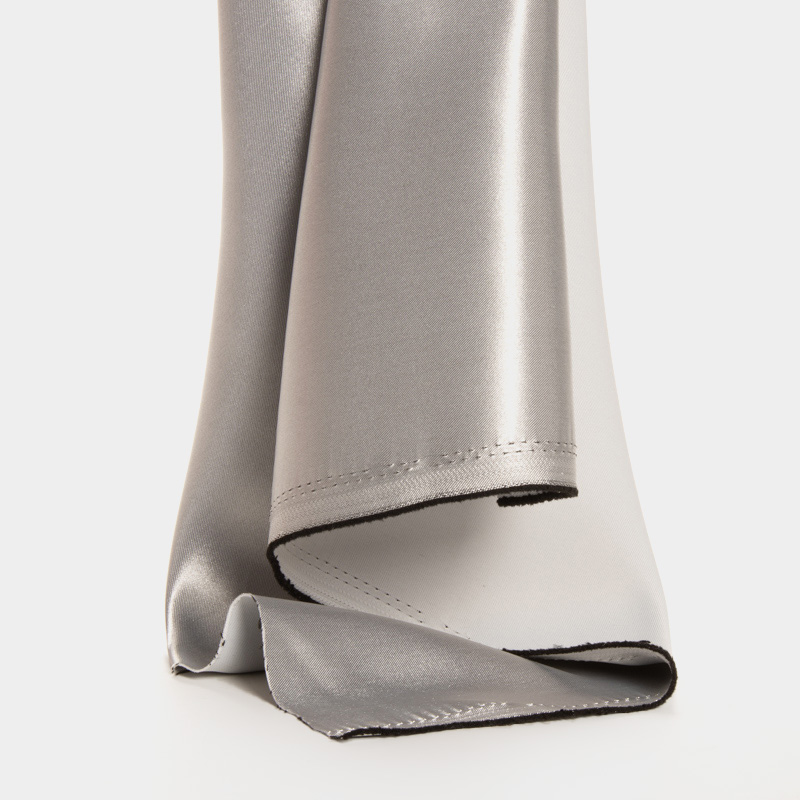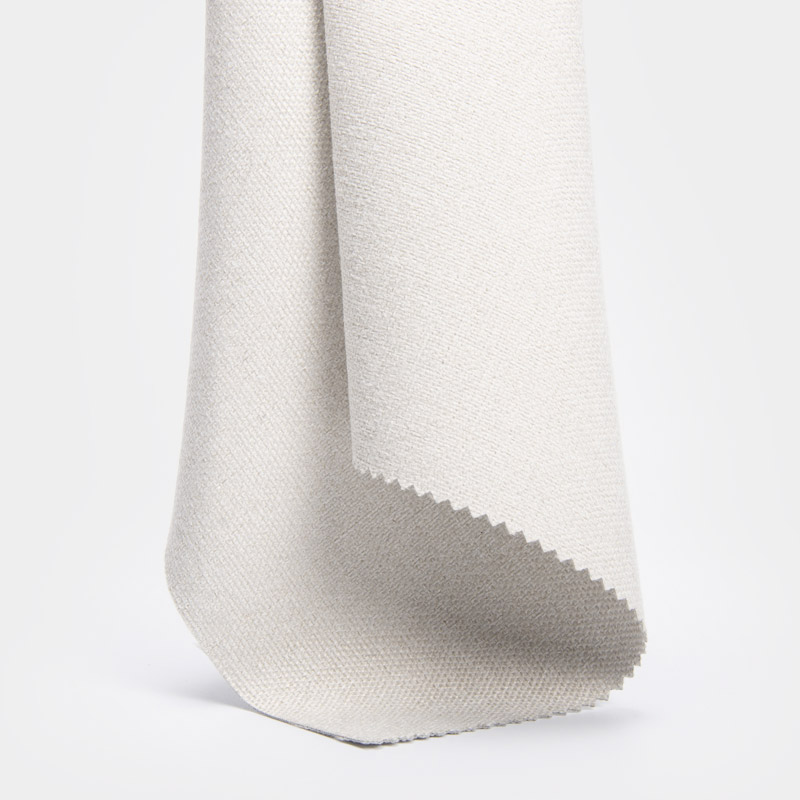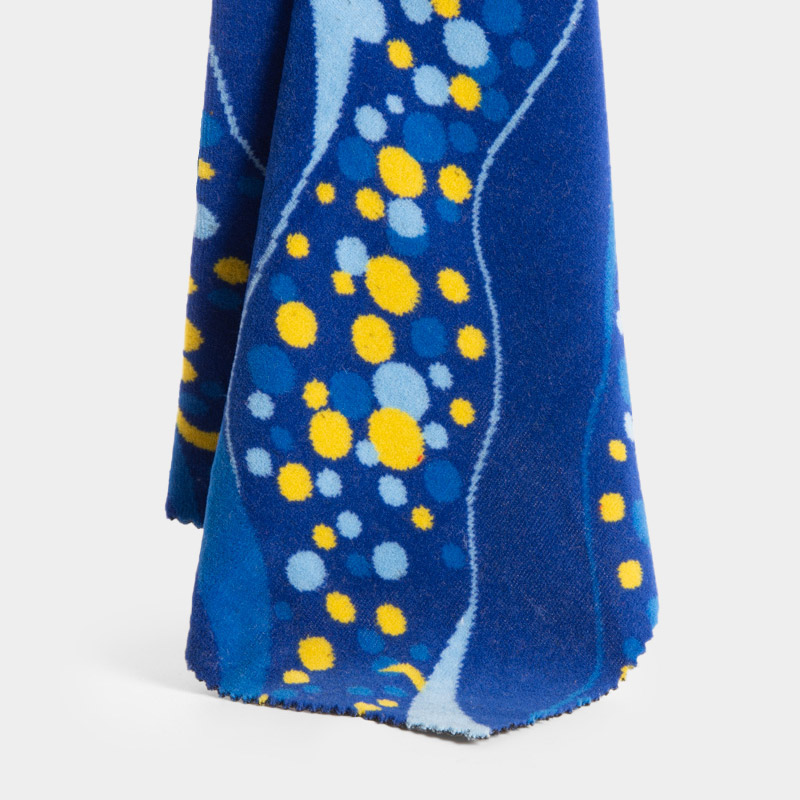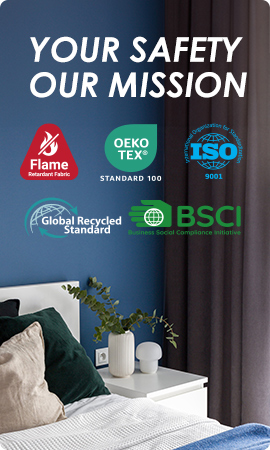How different materials Enhance Blackout Fabrics’ Efficiency?
Principles and Materials of Blackout Curtain Fabrics
Blackout curtain fabrics materials are designed to block out light to enhance privacy and save energy consumption efficiently due to the fabrics composition.
Three-layer Natural Flame-retardant Polyester Yarn
Blackout curtain fabrics often incorporate a three layer natural flame retardant polyester yarn for safety and practicality purposes. The three layers collaborate to improve the fabrics blocking capabilities and provide a level of flame resistance. The outer layers are usually tightly woven to prevent light from seeping while the middle layer may include extra treatments or coatings to boost opacity and longevity.
Coated Blackout Fabric with Four-layer Blackout Coating and Flame-Retardant Polyester Yarn
Another advanced material involves a coated blackout fabric featuring a four-layer blackout coating combined with flame-retardant polyester yarn. This configuration provides superior light-blocking capabilities due to its multiple layers, each serving a specific function. The outermost layer is often treated for UV resistance, protecting the fabric from sun damage while the inner layers contribute to the fabric’s overall opacity and flame retardancy. This combination not only enhances light blockage but also increases the longevity of the curtain.
Evaluation Criteria for Blackout Fabrics
Blackout fabrics are judged on factors to gauge how well they perform and how long they last.
Absorption of Light Waves by Multi-layer Composite Structures
The way light waves are absorbed by materials with multiple layers plays a crucial role in deciding how effective a fabric is at blocking out light completely. These structures are created to capture and soak up the light within their layers to stop it from getting. The intricate composite structure is made to be more efficient, it can absorb different wavelengths of light leading to better blackout capabilities.
Laboratory-grade Opaque Fabric
Quality dense materials are examined in regulated settings to confirm their ability to block out light effectively at a professional level. Experts assess the fabric’s capability to stop light from passing through it. It can guarantee the fabric fulfills the criteria for applications demanding complete darkness like laboratories and photography darkrooms.
Tear Resistance of Thickened Polyester Base
The durability of a thickened polyester base is essential for maintaining the long term integrity of fabrics used in high demand environments or commercial settings. In those conditions, they must endure frequent wear and tear without tearing or fraying.
Impact of Stitching Process on Long-term Use Deformation
The way the fabric is sewn plays a role in how well blackout curtains work over time. If the sewing quality is low and not done properly then the fabric may lose its shape. Start to sag which can make it less effective at blocking out light. When high quality sewing techniques are used, it helps the fabric to keep its structure and performance for longer.
Analysis of Mainstream Blackout Fabrics Technologies
Various technologies are utilized in the creation of blackout textiles to provide advantages.
Double-sided Dual-color Matte High-step Composite Technology
Sided dual color matte high step composite technology consists of overlaying various hues on both sides of the fabric. It is to enhance its visual appeal and optimize its light blocking properties by using of contrasting colors. Its aim is to absorb more light effectively. The matte finish also helps reduce glare and reflection for improved room darkening effects.
Magnetic Stitching of Velcro Darkroom Fabric
In Velcro, darkroom fabrics magnetic stitching technology is utilized to offer an approach for swift setup and removal. By integrating magnets into the fabric edges, they can adhere firmly without the need for sewing techniques. This innovative method allows for the adjustment of curtain positioning. At the same time, it can ensure efficient blocking of light sources.
Light Absorption and Decoration of Velvet
Velvet is famous for its look and superb ability to absorb light effectively due to its dense pile structure. The special structure captures light within its fibers – making it a perfect choice for blackout curtains. And It also serves as decorative features to elevate the rooms elegance while providing effective darkness.
Bamboo Fiber Woven Material for Blackout
Using bamboo fiber woven materials presents an option with inherent antibacterial features and great breath qualities. These fibers are intricately woven to form a structure that can block out substantial light. At the same time, it still can permit air to flow through. Bamboo fiber curtains offer advantages alongside a commitment to environmental wellness.
Each type of material and technology mentioned can improve the effectiveness of blackout fabrics. The principal is to provide customized solutions that cater to specific requirements and preferences across different applications.
4 Application Scenarios for Blackout Fabrics
Blackout fabrics serve purposes in different situations. And It had various benefits from the special properties.
Photography Studios
In photography studios, having a controlled lighting setup is crucial for achieving high-quality images. Blackout fabrics play a role in these environments. Because it can block out external light sources. The Light sources can give photographers the ability to finely adjust lighting conditions. The woven and multi-layered design of blackout curtains effectively prevents natural light. So it can help create the perfect setting for capturing photos.
Medical Darkrooms
In darkrooms that require careful management of light exposure for developing photos and carrying out delicate experiments, blackout fabrics are essential tools as they possess excellent opacity and light absorption properties. Those features can prevent any unwanted light from affecting the quality of photographic work or experimental outcomes.
Baby Rooms
Creating an ambiance in nurseries is crucial for ensuring peaceful sleep and relaxation for babies. Using materials can set a tranquil mood. It can shield sunlight and minimize noise levels – especially helpful during daytime snoozes. Finally, its aim is to prevent outside disruptions that may disturb a baby’s rest pattern.
Bedrooms
Bedrooms greatly improve with materials as they help improve the quality of sleep. Because it reduces the amount of light coming in and provides complete darkness. So people can get better rest and insulation to keep a comfortable temperature for a good night’s sleep.
4 Production Methods for Blackout Fabrics
The methods used to make blackout fabrics play a role in deciding how well they work and how long they last.
Black Glue Coating
Black adhesive coating is a method employed to improve the blocking properties of blackout materials. Because it can add a layer of dark glue onto the fabrics surface to absorb light. And it can minimize its transmission effectively for better blocking of both natural and artificial light sources.
Anti-static Treatment
To prevent the buildup of electricity that attracts dust and particles, blackout fabrics can maintain their cleanliness and aesthetic appeal with their special structure by preventing static-related problems.
Three-layer Woven Structure
Making fabrics a popular technique involves weaving three layers together intricately. Three-layer structure can boost the fabric’s ability to block out light effectively and efficiently with durability and strength.
Dense Weaving
Manufacturers use a weaving technique when making blackout fabrics. The step is to enhance their light-blocking capabilities because it can maximize thread counts and tightly interlock fibers. It can minimize gaps that allow light to pass through effectively resulting in top-notch blackout performance.
4 Advantages of Using BEGOODTEX Blackout Fabric
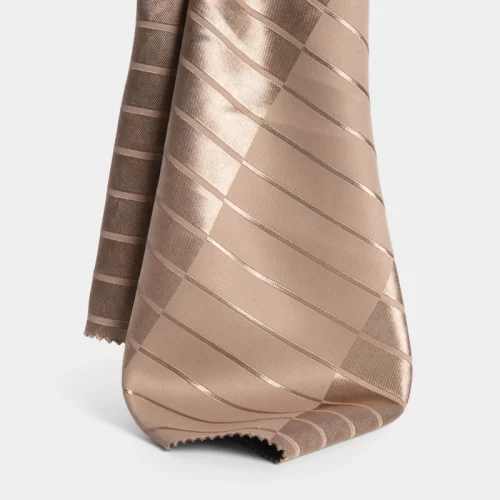
The BEGOODTEX fabric provides benefits that make it a great option for a wide range of applications. Most of the applications need efficient blackout fabrics. BEGOODTEX focus on flame retardant fabrics for almost all the industry. So you can find your fabrics that you want.
Flame Retardant Feature
BEGOODTEX blackout fabric offers an advantage with its flame retardant feature. It improves safety by lowering the likelihood of fire accidents in settings prone to fire hazards. It is designed to meet safety requirements. It incorporates flame-retardant materials without compromising its functional properties.
Strong Blackout Effect
The BEGOODTEX blackout fabric offers light-blocking capabilities thanks to its innovative design and materials. It is highly efficient in creating darkness. It is ideal for spaces like darkrooms and media rooms that require minimal light infiltration.
Sound Insulation
BEGOODTEX blackout fabric not only blocks light but also provides sound insulation capabilities. This quality is especially advantageous in busy city settings or places with loud background noise levels since it promotes quieter indoor spaces. The property is ideal for unwinding or focusing on tasks.
Heat Insulation
The BEGOODTEX blackout fabric also helps in insulating heat. Because it can minimizing heat exchange between the outside spaces. This feature aids in energy efficiency by keeping indoor temperatures stable without relying heavily on heating or cooling systems and thereby saving costs in the long run.
The versatility of BEGOODTEX blackout fabric makes it a valuable choice for improving both functionality and comfort in settings.
Security Standards
BEGOODTEX is the world’s leading manufacturer of flame retardant textiles with excellent safety standards as its core competence. It has many kinds of standards from different countries as below: USA: NFPA 701, CA117, CFR1615, CA TITLE 19. CA: CAN/ULC-S109-14. EU: EN13501, EN 13773 CLASS 1. DE: DIN 4102-B1,DIN 54342. FR: NF-P92-503-M1. UK: BS5815, BS5852 CRIB 5, BS5867 TYPE C, BS7175 SOURCE 7. IT: NUI9177 CLASSE 1. JP: JIS L 1091. The company’s products strictly comply with those international certifications through self-developed environmentally friendly flame retardant technology. It can achieve the durable fire resistance of textiles in extreme environments.
FAQ
Q: In what sectors are flame blackout fabrics typically needed?
A: These fabrics are often used in hotels and hospitals for safety reasons and in theaters for control purposes. They are also popular in tent production for events and temporary structures as well as for home curtains.
Q: What kind of certifications are required for flame blackout fabrics?
A: Like NFPA 701 and UL94. In the United States market NFPA 701 for fire performance testing and UL94 for plastic flame retardant rating are commonly emphasized; whereas in Europe EN 13501. 2 Certification might be necessary.

